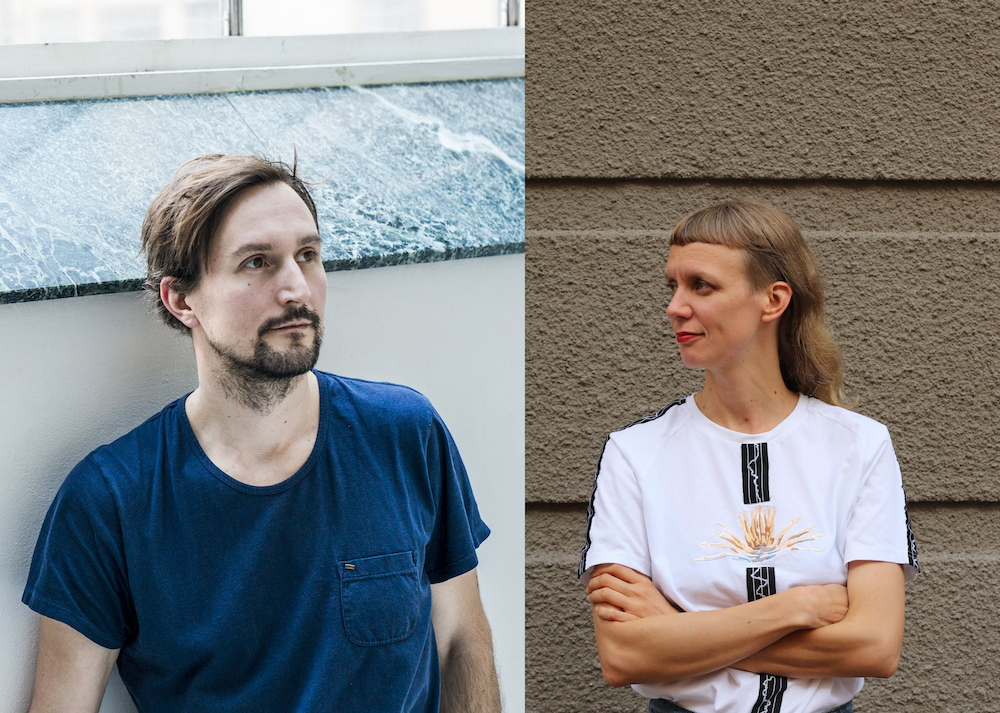When our eyes touch is the first chapter of A I S T I T / coming to our senses, a year-long series of exhibitions and performances commissioned by the Finnish Institutes in the Benelux, France, Germany, and the UK and Ireland to explore the complexity and wonder of our sensory perceptions and how they shape us as human beings.
Curators Hans Rosenström and Satu Herrala shared with us the genesis of the project and their thoughts on the topic of ‘senses’ (‘aistit’ in Finnish).
Hans Rosenström:
When the directors of the four Finnish Institutes approached me with an invitation to explore the world of the senses, I was intrigued. My artistic practice has revolved around the sensorial and notions of presence.
However, considering the potential of the proposition, it became clear to me that this commission should be delved into with a multitude of voices. With the institutes’ blessing, I contacted the curator Satu Herrala to ask if she’d like to be my partner, to curate and organise an extensive programme.
Satu Herrala:
I was delighted by this invitation. Hans’ practice as an artist has always resonated with me. He has the capacity to bring those engaging with his work to be truly present with their senses. With my background in dance, my orientation to the world comes from an embodied state where paying attention to the senses is vital. I try to move through the world in a conscious relation with the myriad bodily worlds and with the sensuous surroundings that we are all woven into.
Hans:
The way senses connect us to our surroundings is fascinating. They play an important role in defining our relationship with the world outside our bodies and how we understand our position in it. Their transcending qualities enable a process by which the world enters into us – and make it possible for us to engage with the world. However, our perception is also obscured and limited to our own perspective. It is important to acknowledge that we share our lives with a multitude of other sensuous beings.
Satu:
As the ecologist, philosopher and magician David Abram once said “Humans are tuned for relationship. The eyes, the skin, the tongue, ears, and nostrils – all are gates where our body receives the nourishment of otherness.” Abram wonders what happens when we (humans) “participate almost exclusively with other humans and with our own human-made technologies”, and claims that we also need reciprocity with others than ourselves and our own creations.
Technological developments have made it possible for us to expand our senses far from our physical location. In 2020, remote working, learning and socialising became commonplace for millions of people around the world. It seems very likely that it is here to stay. What happens to our sense of being when our presence is less and less bound to our bodies’ physical location? How to settle into our bodies while we continue to reach out? With these kinds of questions in mind, we started to plan the program for A I S T I T.
Our approach to the topic of senses became twofold: On the one hand, we were interested in how art can make us aware of our own sensory experiences of the world in subtle and nuanced ways. On the other hand, we were eager to find out how art can guide us through the complexities of the sensory realm.
Hans:
Typically, our senses are divided into five distinct categories; sight, smell, taste, touch, and hearing. We wished to move away from separate sensory systems and think about senses in a more holistic manner instead. How do sensorial organs support each other to make up our lived experience of the world? It became focal to us to approach the sensorial realm through notions of presence, interconnectedness, and embodied empathy.
Read also Satu Herrala’s and Hans Rosenström’s presentations.
When our eyes touch, coming soon at Institut finlandais.
